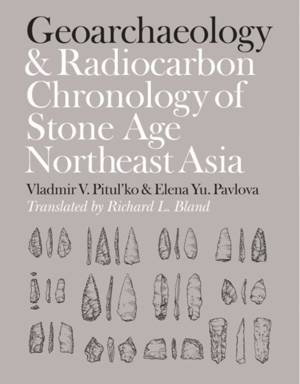
- Afhalen na 1 uur in een winkel met voorraad
- Gratis thuislevering in België vanaf € 30
- Ruim aanbod met 7 miljoen producten
- Afhalen na 1 uur in een winkel met voorraad
- Gratis thuislevering in België vanaf € 30
- Ruim aanbod met 7 miljoen producten
Zoeken
Geoarchaeology and Radiocarbon Chronology of Stone Age Northeast Asia
Vladimir V Pitul'ko, Elena Yu Pavlova
€ 91,95
+ 183 punten
Omschrijving
This English translation of a work previously published in Russian (Geoarkheologiya i radiouglerodnaya khronologiya kamennogo veka Severo Vostochnoi Azii, St. Petersburg: Nauka, 2010) presents an overview of the Paleolithic archaeology of Northeast Asia, with emphasis on geoarchaeological and radiocarbon-based chronology. Although archaeological investigations above the Arctic Circle began more than two hundred years ago, access to and publication of findings has been difficult. In Geoarchaeology and Radiocarbon Chronology of Stone Age Northeast Asia, veteran researchers Vladimir V. Pitul'ko and Elena Yu. Pavlova have gathered and analyzed the available data to provide comprehensive documentation of human occupation of continental territories far above the Arctic Circle in the late Neopleistocene (also known as the Late Pleistocene era). By using uncalibrated radiocarbon dating, Pitul'ko and Pavlova have been able to establish reliable correlations between the artifacts and phenomena being studied. The increased number of radiocarbon age determinations for these Arctic sites is the most important data to come from the latest studies of Northeast Asia, offering a significant opportunity for re-evaluation of older materials in light of these new findings.
The authors include reporting on recent work performed at two of the most important sites in the region: the "mammoth cemetery" site at Berelekh and the Yana Rhinoceros Horn Site.
The authors include reporting on recent work performed at two of the most important sites in the region: the "mammoth cemetery" site at Berelekh and the Yana Rhinoceros Horn Site.
Specificaties
Betrokkenen
- Auteur(s):
- Uitgeverij:
Inhoud
- Aantal bladzijden:
- 256
- Taal:
- Engels
- Reeks:
Eigenschappen
- Productcode (EAN):
- 9781623493301
- Verschijningsdatum:
- 8/04/2016
- Uitvoering:
- Hardcover
- Formaat:
- Genaaid
- Afmetingen:
- 224 mm x 284 mm
- Gewicht:
- 898 g

Alleen bij Standaard Boekhandel
+ 183 punten op je klantenkaart van Standaard Boekhandel
Beoordelingen
We publiceren alleen reviews die voldoen aan de voorwaarden voor reviews. Bekijk onze voorwaarden voor reviews.











